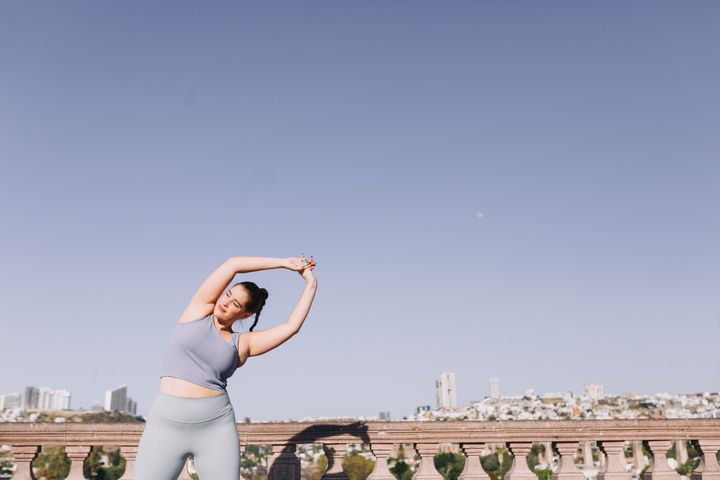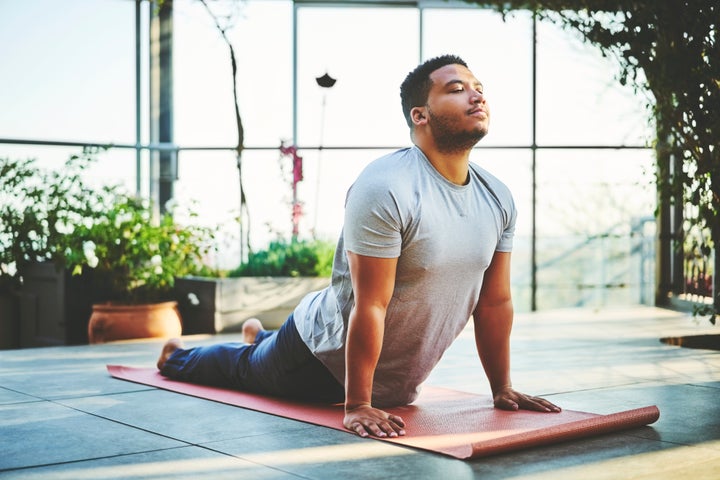
If you’ve recently recovered from Covid-19 ― or if you’re experiencing long-term effects from your infection ― you’re probably anxious to get back to your normal (or as normal as can be during a pandemic) life. Part of that pre-coronavirus routine may include exercise.
Obviously there are huge mental and physical health benefits to moving your body, and it’s important to adopt a fitness routine that works for you. But it’s also crucial to be smart about working out after Covid-19, because doing too much too soon could set you back even further.
Below, experts share how to start exercising again after a Covid-19 diagnosis, plus the signs that you may not quite be ready yet.
When to start working out again depends on your symptoms
Covid-19 affects everyone differently. There are general guidelines for when it’s safe to start sweating, but it’s all very dependent on what symptoms have been present.
“If someone is suffering from the symptoms of Covid, they should wait until those symptoms have been resolved before starting light to moderate exercise,” said Keri Denay, the medical director at Briarwood Family and Sports Medicine in Ann Arbor, Michigan, and a fellow at the American College of Sports Medicine. “This is typically anywhere between 10 to 14 days.” Exercising before then may worsen or prolong symptoms.
If you’re asymptomatic but have tested positive for the coronavirus, you may be itching to get moving sooner. After all, exercise can help your immune system when it comes to respiratory infections like Covid-19, according to research published in the International Journal of Clinical and Experimental Medicine.
“The immune and inflammatory response to Covid is lower in asymptomatic individuals compared to those with symptoms,” Denay said. However, it’s still best to err on the side of caution and take it easy till you fully recover or in the event that you have a delayed reaction to the virus and show symptoms later than usual.
“All athletes and people that engage in exercise that test positive for Covid-19, regardless of symptoms, must rest for a minimum of 10 days,” said Brian Grawe, a board-certified orthopaedic surgeon and assistant professor of orthopaedics and sports medicine at the University of Cincinnati College of Medicine. “If a person tests positive but does not have symptoms, the [rest period] starts at the date of the positive test.”

How to start exercising safely after a mild or moderate coronavirus infection
“Start low and go slow,” Denay said.
The best things to do are low-impact: Think walking, yoga, easy cycling or swimming. If you prefer strength training, use your body weight only or the lightest weight possible and build up from there. Don’t pick up where you left off weight-wise before you got sick.
Keep in mind you should start with the lowest number of reps as well, steering clear of any AMRAP (as many rounds as possible) or HIIT (high-intensity interval training) workouts where you crank out however many reps you can do in a set amount of time.
As a general rule of thumb, it’s helpful to follow a 50/30/20/10 modification rule over the span of four weeks, as this study published in HSS Journal recommends. This means your workout level should be reduced by at least 50% of your normal exercise capacity in the first week, followed by 30%, 20% and 10% in the following three weeks. But again, it’s important to pace yourself. You may need to adjust depending on the severity of your infection, and you may require “a graduated return to activity occurring over many months rather than weeks,” the researchers behind the study said.
Both Denay and Grawe said it’s critical to constantly monitor how you feel as you resume high-intensity activities, whether it be your workouts or any organised sports. If you experience any of the below, stop exercising and consult a health care provider before starting up again.
- Chest pain or heart palpitations
- High heart rate not proportional to exertion level or prolonged heart rate recovery
- Shortness of breath, difficulty catching breath, or abnormal, rapid breathing
- Excessive level of fatigue
- Swelling in the extremities or muscle aches
- Passing out
- Tunnel vision or loss of vision
- Fever
Ignoring these symptoms and doing high-intensity workouts anyway can potentially lead to arrhythmia for those with myocarditis, an inflammation of the heart muscle that in some cases can be caused by Covid-19 (and may even go undiagnosed or remain unknown).
“As you start exercising again, keep in mind this is not the time to power through discomfort, particularly if it comes in the form of chest pain, heart palpitations or extreme shortness of breath,” Grawe said. “Listen to your body and keep in mind it’s going to take a solid one to two weeks to regain your fitness and get back on track. Increasing physical activity slowly and crescendo back to your normal routine will be safest.”
While this may be frustrating, use this time to focus on things that can help increase your performance and stamina not tied to sweating, such as proper hydration, stress reduction and nutrition. Remind yourself that rest can also be productive in the long term.

How long-haulers should handle exercise
There’s no cookie-cutter approach for anyone when it comes to working out after Covid-19, but that’s especially true for those with long-haul symptoms, Grawe said.
“Those who have been infected need to pay close attention to their body and keep an eye out for symptoms the same as someone would who has fully recovered from the virus,” Denay said. “It’s going to take time to resume previous levels of activity, and although the brain may be ready, the body may not.”
Alternatively, Grawe said those who feel physically ready may not have mentally recovered from their Covid-19 diagnosis, so it’s important to recognise where you’re at and keep your GP involved in your care if questions or concerns arise.
As mentioned above, starting with low-impact work is smart ― especially if you have lingering symptoms such as a cough or difficulty breathing. Any high-intensity work could aggravate this. Talk to your doctor or a physical therapist about what their advice is for your specific case.
Above all, patience is the No. 1 thing you’ll need in order to start exercising safely again. This includes resisting the urge to compare yourself to others who may have been sick and are now back to their regular workouts, as Covid-19 affects every patient differently.
“Remember that one person’s mile is another person’s marathon,” Grawe said.